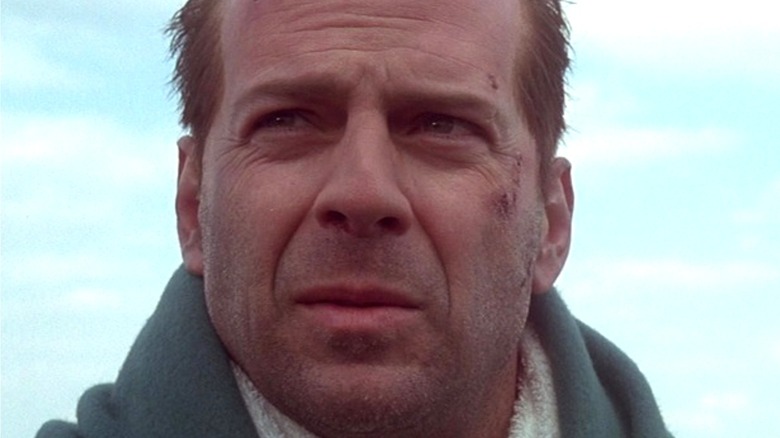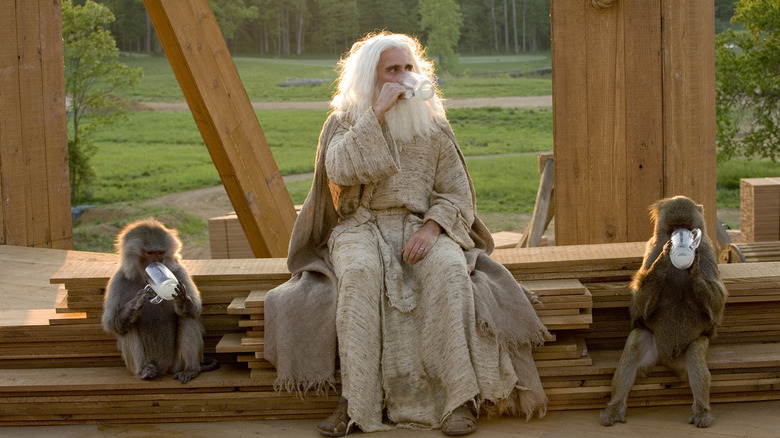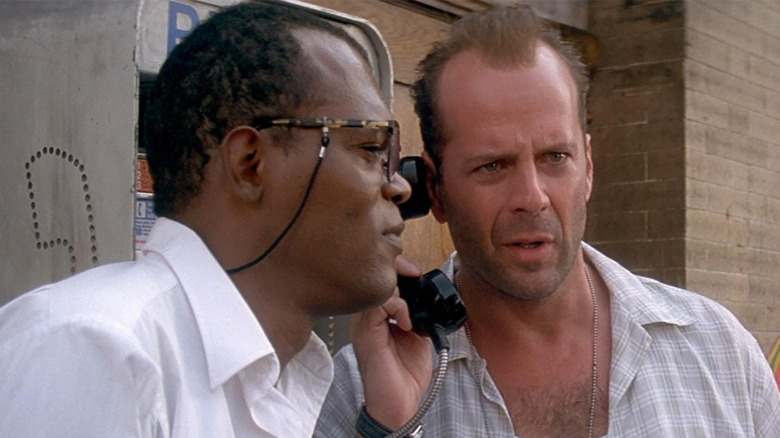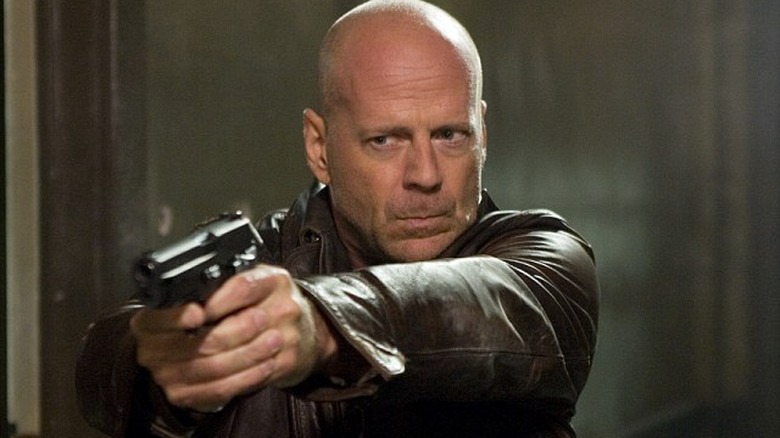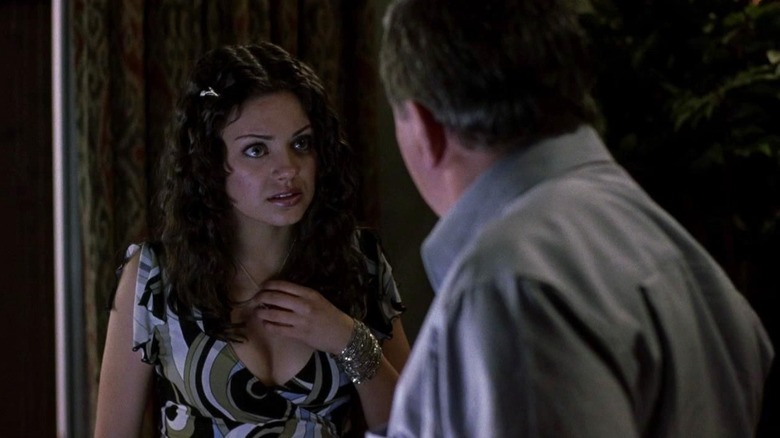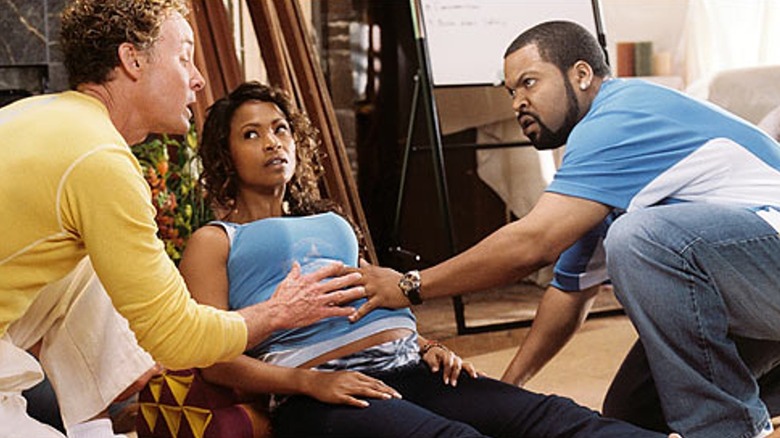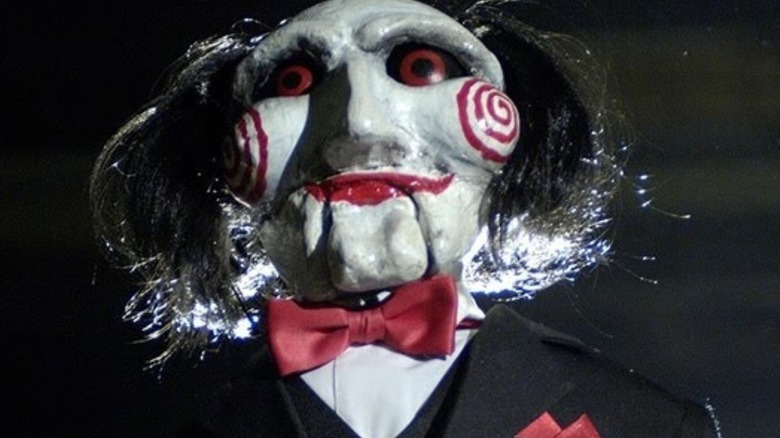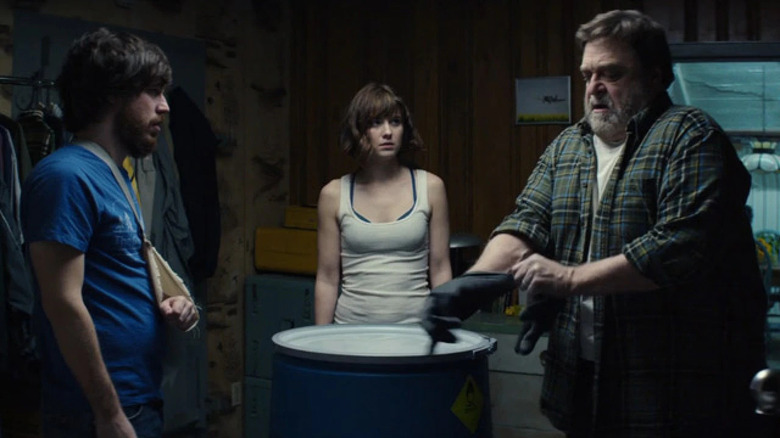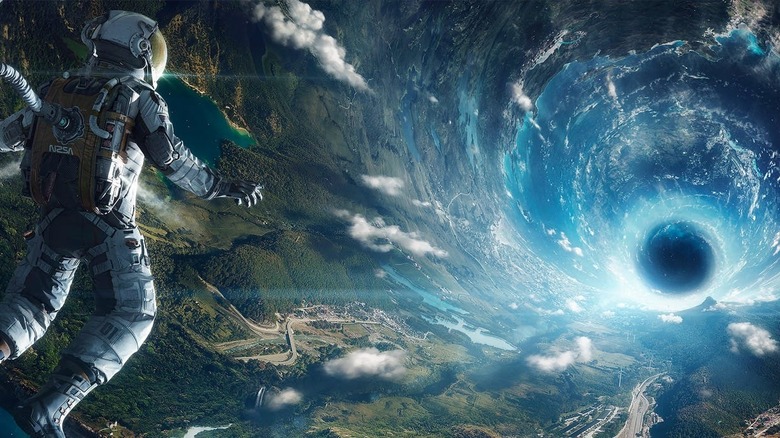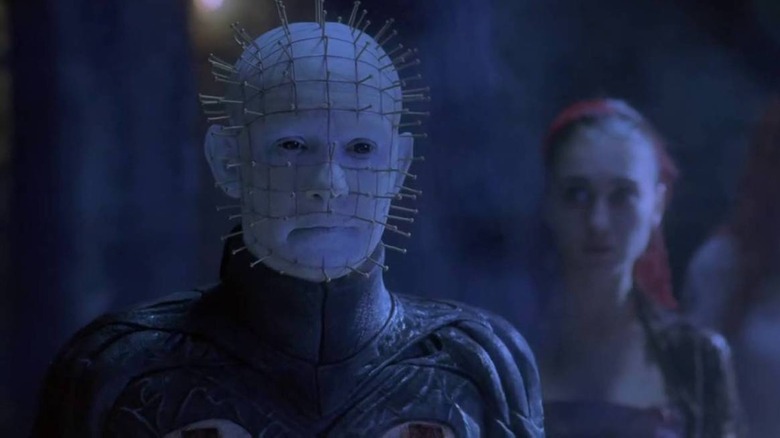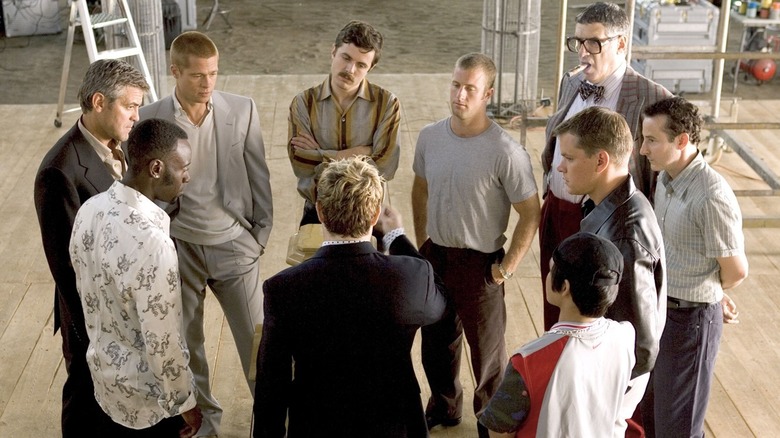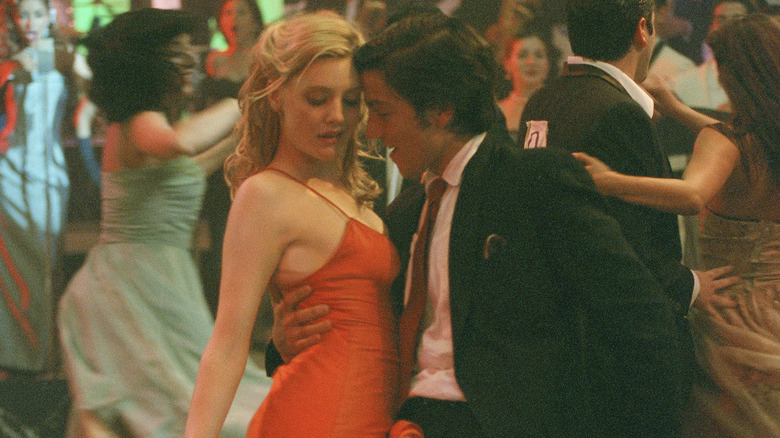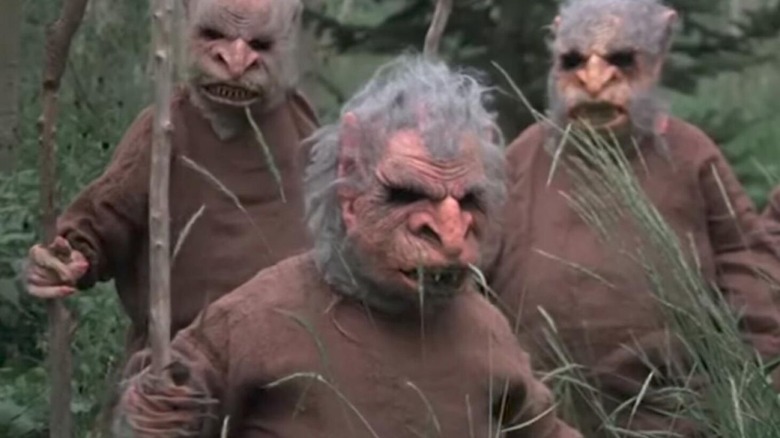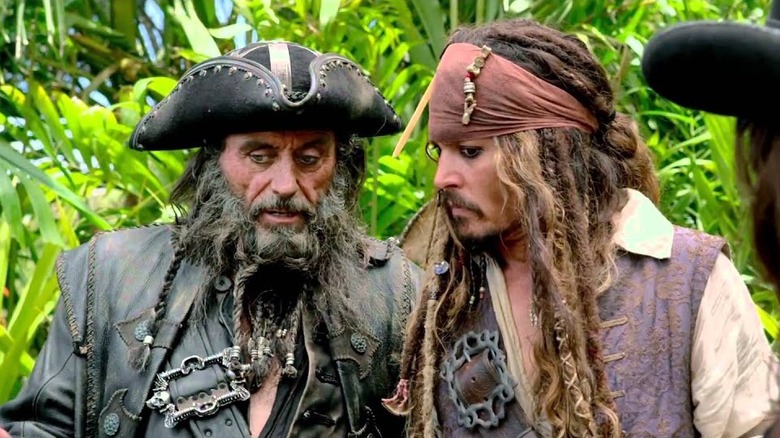These Movie Sequels Were Not Originally Meant To Be A Sequel At All
One often hears complaints about how Hollywood has become too reliant on sequels and franchises instead of telling original stories. Of course, is this phenomenon is nothing new. Ever since its inception, the film industry has relied on existing IP to get people into theaters.
Sometimes this means adapting existing stories from other mediums into movies. Other times you get one successful original film, and the studio then bankrolls a string of sequels and spinoffs to cash in on the brand recognition. That's what happened to hits like "Rocky," "Indiana Jones," and "Jaws," not to mention the many, many ongoing series in the horror genre.
When it comes to making sequels, studios don't always have a clear plan for moving the story forward from a standalone movie once it becomes a box office hit. This sometimes results in an original script being reworked to quickly turn it into a sequel by adding in familiar characters and circumstances. This sort of thing happens more often than you would think, as proven by just how many sequels started out as original stories.
Evan Almighty
Religion-themed movies are never going to be the first thing that comes to mind when it comes to box office gold. But the success of certain outliers like "The Passion of the Christ" keeps studios on their toes and hoping for the occasional miracle in the genre. One movie that pulled off such a miracle was 2003's "Bruce Almighty," which managed to rake in the money around the world on the strength of Jim Carrey's comedic performance, despite often facing bans due to its sensitive religious content (per The Guardian).
Following the breakout success of "Bruce Almighty," Universal was more than willing to throw money at a sequel. The only problem was that Carrey was notorious at the time for not doing sequels. So instead the studio decided to make a sequel with supporting character Evan Baxter (Steve Carell) in the lead, titled "Evan Almighty."
While "Bruce Almighty" told a fresh story about finding God in modern times, "Evan Almighty" was more like a pastiche of the story of Noah's Ark with a modern twist. The sequel has little to do with the world of "Bruce Almighty" beyond some returning lead characters, particularly Morgan Freeman as God. That's because "Evan Almighty" started out as an original script bought by a different studio entitled "The Passion of the Ark," about a modern widow tasked with following in Noah's biblical footsteps, before it was reworked into a sequel (per MovieWeb).
Die Hard with a Vengeance
Few movies have had as much of an impact on their genre as 1988's "Die Hard" has had on the action landscape. The film moved away from big, flashy action sequences featuring giant men with bulging biceps to tell a gritty, grounded story of an ordinary cop trying to take down a group of terrorists in a Los Angeles skyscraper using his wits and cunning.
The breakout success of "Die Hard" made a star out of its lead Bruce Willis, and gave the studio a promising new property to turn into a franchise with multiple sequels. While 1990's "Die Hard 2: Die Harder" more or less sets the same type of action in another centralized location — this time an airport — the third film in the series switches things up. 1995's "Die Hard with a Vengeance" features Willis returning as John McClane in a race to uncover the threat of a series of bombs planted across New York City. The reason the premise of "Die Hard with a Vengeance" is so different from the original "Die Hard" is because it was initially an original script titled "Troubleshooter" by James Haggin (via The Los Angeles Times).
After Haggin sold his script to Largo Entertainment, "Troubleshooter" was passed on to Fox, and the studio decided to turn it into the third "Die Hard" movie. Then the script for "Troubleshooter" underwent several rewrites before it eventually turned into "Die Hard with a Vengeance," to the point where the final movie has little in common with Haggin's original script.
Live Free or Die Hard
After the success of "Die Hard with a Vengeance," Fox decided to continue with the trend of taking original scripts and turning them into "Die Hard" sequels. When the time came to make a fourth "Die Hard" movie, the studio started hunting around for an original story in the action genre that John McClane could be a part of.
According to Hollywood reports around the late '90s (via E! Online), the initial idea was for Bruce Willis to reprise McClane in a reworked version of a script by Chris Gerolmo titled "Tears of the Sun." The movie would have seen John McClane take on a drug organization in the jungle rather than sticking to the urban settings of the original trilogy. After a lot of rewrites, the project was eventually abandoned. (Though, per Den of Geek, Willis liked the title so much he attached it to the unrelated 2003 film about Navy SEALs he starred in and produced.)
Next came the original script "WW3.com" by David Marconi, based on a Wired article entitled "A Farewell to Arms," which was once again picked up by Fox as a promising story for the "Die Hard" franchise. The script by Marconi was reworked by various writers under Fox until it became 2007's "Live Free or Die Hard" (via SciFi.com). To add one further twist to the movie's identity, it was released in some territories as "Die Hard 4.0" (per The Guardian).
American Psycho 2
Before donning the Batman cowl to defend Gotham City from psychopaths in the "Dark Knight" trilogy, Christian Bale murdered his way into the hearts of audiences as Patrick Bateman, the lead character in 2000's dark satire "American Psycho." In director Mary Harron's nuanced take on Bret Easton Ellis' novel, Bale turned in an unforgettable performance as the Reagan-era Wall Street hotshot who moonlights as a serial killer.
The movie was shocking, disturbing, and the stuff that cult classics are made of. Although it didn't pull in a lot of money at the box office, "American Psycho" was deemed a significant enough hit that the studio greenlit a sequel in 2002 starring Mila Kunis as Rachael, a budding serial killer who offs a non-Bale version of Patrick Bateman at the start of the movie before embarking on her own murder spree.
"American Psycho II: All American Girl" carries none of the compelling characterization or gallows humor that made the original such a memorable movie. In fact, "American Psycho II: All American Girl" feels barely connected to the world of the original, and that's because it initially wasn't connected at all. And this wasn't just a late-stage re-write — the movie was well into production under the title "The Girl Who Wouldn't Die" before its connection to Harron's film was shoehorned in (per The Guardian). "When I did ['American Psycho II'], It was supposed to be a different project," Kunis explained to MTV. "And it was re-edited, but, ooh ... I don't know. Bad."
Are We Done Yet?
Ice Cube is mostly known for his music and for his acting roles as a no-nonsense, street-hardened cop, even in comedy movies like "21 Jump Street" and "Ride Along." But the multi-talented star is not above showing a softer side to his personality in family-friendly movies like the 2005 family road comedy "Are We There Yet?"
Ice Cube plays the lead role of Nick Persons, a bachelor who has a strong dislike for kids. Being attracted to a single mom, Nick is forced to spend time with her two children and ends up caring for them deeply. "Are We There Yet?" was reasonably successful enough to greenlight a sequel with Ice Cube returning to the lead role.
The only problem was there was no script in place for a sequel. Instead, the studio decided to remake the 1948 Cary Grant comedy "Mr. Blandings Builds His Dream House" as a sequel to "Are We There Yet?" titled "Are We Done Yet?" (per Variety). The role originally essayed by Cary Grant proved a surprisingly good fit for Ice Cube, and the remake/sequel ended up making a reasonable profit at the box office despite lagging behind the original.
Saw II
The 2000s saw the start of a fresh new era for torture-based horror movies with the release of 2004's "Saw." Directed by James Wan in his feature film debut, the movie signaled the arrival of a bold new voice in horror with its twisted story of a serial killer who traps people he considers immoral and makes them suffer in horrific ways to make them atone for their sins.
Despite its highly graphic content (or because of it), "Saw" became a surprise must-see for horror fans, and its impact on the genre was instant. It was not long before the studio announced a sequel — in fact, the movie was still playing the festival circuit when Lionsgate got to work. The problem was that Wan had already gotten involved in other projects, and could not return as the director. Enter budding filmmaker Darren Lynn Bousman, who had written an original script titled "The Desperate," which carried many similarities to "Saw." Bousman's script was shown to the original film's producers, and they realized that with a bit of tinkering, "The Desperate" could be turned into "Saw II."
The idea of turning his original story into a sequel for another movie did not immediately appeal to Bousman. But then the producers showed him an early cut of "Saw" before the movie started blowing up outside of film festival circles. "I saw [the film] and I was like, 'Holy s***, this movie is amazing," Bousman told Bloody Disgusting. "I immediately got how similar [my script] was in tone and style to what 'Saw' was." Finally, Bousman agreed to turn "The Desperate" into the sequel to "Saw."
10 Cloverfield Lane
Found footage horror films exploded in the wake of "The Blair Witch Project" becoming one of the most profitable movies ever made. What remained rare, though, was finding a well-made sci-fi movie in this niche. One of the best examples is 2008's "Cloverfield," created by the formidable creative twosome of Matt Reeves and J.J. Abrams.
The movie presents an unsettlingly intense first-person view of a mysterious but gigantic creature terrorizing New York City. Despite the creature lurking out of sight in most scenes, the feeling of dread it evokes proved very effective for audiences. After the huge box-office earnings against the movie's tiny budget, Paramount was eager to make a follow-up. One finally arrived in 2016 with "10 Cloverfield Lane."
The first thing you'll notice about the sequel is that it drops the original movie's found footage perspective. The second thing you'll notice is that it doesn't seem to be about the same monster at all. That's because "10 Cloverfield Lane" was adapted from an existing script titled "The Cellar," which Abrams and his team were developing independently at the time. "There were so many elements [in 'The Cellar' that] felt like the DNA of this story were of the same place that 'Cloverfield' was born out of," Abrams told Entertainment Weekly. "It felt like if we were literal about connections to the first movie but in no way that people might expect us to be, ['10 Cloverfield Lane'] could be its own thing."
The Cloverfield Paradox
After turning "The Cellar" into "10 Cloverfield Lane" resulted in a critical and financial success, producer J.J. Abrams decided to try the same approach to create a third film in the series, again based on an original script that started out as a standalone story unrelated to "Cloverfield" or its sequel.
The script in question turned out to be "God Particle," a spec script written by Oren Uziel that Abrams' company had bought, and which was already slated to be produced as an original film before Abrams had the idea to turn the story into a continuation of the "Cloverfield" franchise. Uziel has gone on record saying he is happy his original story was turned into a sequel, since it guaranteed a pre-existing audience based on the popularity of the franchise. As he told Collider, "If that stamp of approval of being part of the Cloverfield universe is enough, that's a huge win [for the movie]."
And so "God Particle" became "The Cloverfield Paradox," telling a story set in the distant future whose events set up the first "Cloverfield" through some alternate timeline shenanigans. This was an aspect that particularly appealed to Abrams, as he told The Independent, "I liked how something in the future could be an origin for something in the past."
Hellraiser: Deader
Horror movies can sometimes get by without any particularly sparkling writing. Some fans will be satisfied with blood and gore and all sorts of nasty kills instead of complex sub plots and sensitive characterizations. And sometimes, a horror movie simply takes a functional existing script and turns into a sequel at a quick pace.
Case in point, the "Hellraiser" series and its Cenobites who make deals with humans involving sadistic torture and death. The movies began under the supervision of writer and filmmaker Clive Barker, who adapted his own novella "The Hellbound Heart" into "Hellraiser." After Barker moved away from the franchise, the studio started tweaking existing scripts to turn them into further adventures of the Cenobites and their prickly leader Pinhead.
This process brought us 2005's "Hellraiser: Deader," as explained by the film's co-writer, Tim Day. "We've taken a script called 'Deader' that Neal Marshall Stevens sold to Dimension almost two years ago as a spec," Day explained to Fangoria (via The Official Clive Barker Website). "I've rewritten it to incorporate the Hellraiser mythology." The reworked screenplay sees Pinhead and his crew locked in battle against a human named Winter who wishes to gain control of the Cenobites using his cult of nihilists.
Ocean's Twelve
You could say that the modern heist genre can be split into eras: before "Ocean's Eleven," and after "Ocean's Eleven." The 2001 film, in itself a remake of the 1960 movie of the same name, had such a massive impact on the cinematic landscape that it's still being referenced two decades later in mainstream pop culture (via IndieWire).
The massive critical and commercial success of "Ocean's Eleven" made greenlighting a sequel a no-brainer. This time around, the studio looked to an original screenplay written by George Nofli entitled "Honor Among Thieves," which told the story of an exciting game of one-upsmanship between two master con artists. "The script had within it a terrific idea for 'Ocean's Twelve,'" producer Jerry Weintraub told IGN. "The story centered around two main characters, so the biggest challenge was adapting it to fit our ensemble."
Director Steven Soderbergh, returning after his slick craftsmanship had made "Eleven" such a hit, agreed with Weintraub's assessment, explaining in the same interview, "The tone of George Nolfi's script was very similar to the tone of 'Ocean's Eleven.'" And so Soderbergh set to work alongside leading man George Clooney turning Nolfi's screenplay into the second installment of a series that would go on to become a full trilogy of modern heist classics.
Dirty Dancing: Havana Nights
Pure romance movies, by and large, rarely get sequels. You might occasionally get something like the coming-of-age rollercoaster of the "Kissing Booth" series or the meditation on the passage of time across Richard Linklater's "Before" trilogy, but most romantic movies are one-and-done. That certainly seemed true of the 1987 blockbuster "Dirty Dancing," featuring Patrick Swayze at his peak hotness dancing and romancing Jennifer Grey, sending audiences swooning in the process.
The blockbuster financial success of "Dirty Dancing" on a tiny budget meant that the studio was naturally eager to see if lightning could strike twice. It took more than a decade and a half, but a sequel was finally made in 2004 entitled "Dirty Dancing 2: Havana Nights." But in case you're thinking the sequel has the characters from the original taking another stab at romance as they grow older, "Havana Nights" has a completely new cast of characters in new locations.
In fact, "Havana Nights" has so little in common with "Dirty Dancing" that they feel like two separate stories ... which they are. The script for "Havana Nights" was initially an original screenplay entitled "Cuba Mine" by Peter Sagal. When the decision was made to do a sequel to "Dirty Dancing," Sagal's script was used as the basis but heavily rewritten before filming began (per NPR). "There's not a line of dialog that I wrote [in the movie]," Sagal told Mental Floss. "But they used my basic story and there are certain things in the movie, mainly the beginning and end, that I came up with."
Troll 2
There's clearly no shortage of cash-grab sequels to well-respected classics. But there are also plenty of movies unanimously declared trash that still somehow manage to achieve enough cult status to spawn a follow-up. One such movie was 1986's "Troll," the story of a magician named Torok who has been transformed into a malevolent troll, seeking to right past wrongs by destroying all of humanity with his magic ring.
The original "Troll" was a generic, by-the-numbers schlock horror movie that nonetheless managed to make a decent profit at the box office. But true history was made by its sequel, "Troll 2." The film has gained a legacy as a cult hit on the back of its reputation as one of the worst movies ever made, with a bewildering plot concerning vegetarian goblins, and not a single troll in sight.
If it seems strange to make a "Troll" movie without an actual troll, that's because the original screenplay for "Troll 2" was simply titled "Goblins," and had nothing to do with the "Troll" franchise (per The Guardian). "Goblins" was meant to be a comedy, but the studio insisted on trying to turn the script into a straight horror. The awkward mish-mash of the two tones gave rise to something neither the studio nor the film's makers could have anticipated, but which nevertheless managed to gather an army of fans worldwide.
Pirates of the Caribbean: On Stranger Tides
The original "Pirates of the Caribbean" movie came from unassuming source material, being based on a Disney theme park ride. Despite pirate movies being long since dead at the box office, 2003's "Pirates of the Caribbean: The Curse of the Black Pearl" became a surprise massive hit, and established one of the most successful Hollywood franchises of all time.
A few years after the original trilogy of "Pirates of the Caribbean" films came to an end with "At World's End" in 2007, Disney decided to take the franchise's iconic character of Captain Jack Sparrow (Johnny Depp) on a fresh adventure. To that end, the studio bought the rights to Tim Powers' 1987 historical fantasy novel "On Stranger Tides." A decision was made to take the novel's standalone adventure and turn it into the third sequel script for "Pirates of the Caribbean."
The final script that ended up becoming the film "Pirates of the Caribbean: On Stranger Tides" differs substantially from Powers' novel, but carries many base similarities as well. "Blackbeard came from the book, and in the book there is a daughter character, too," co-screenwriter Terry Rossio explained to The Hollywood Reporter in 2011. "But Jack Sparrow is not in the book, nor is Barbossa [Geoffrey Rush]. So I wouldn't call [the movie] an adaptation [of the novel]."
